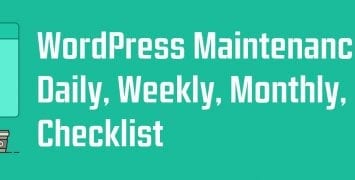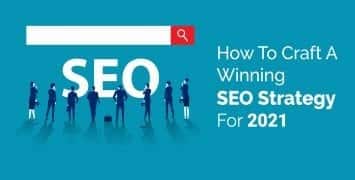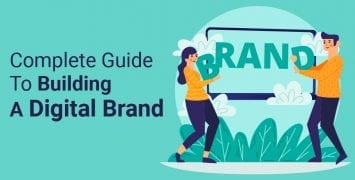SEO & PPC Are Like Milk and Cookies
Most of those who are trying to get quick results usually lean towards spending their budget on a PPC campaign where ads appear on top, to the right and at the bottom of organic listings. It’s one of the main avenues of promoting your business website without too many hassles. Panda who? No problems here. Paid listings definitely have an advantage of appearing at the top of the SERP and we can easily measure performance based on average position.
Since we love to measure and analyze everything in the PPC world we often overlook comparing organic stats to paid ad stats. Whether working on a client account at an agency or being in charge of a digital marketing company as a whole it’s important to understand that organic search engine optimization or pay per click advertising are both viable options for improving your web presence. Of course depending on the financial situation you’ll want to allocate funds depending on your company’s needs and priorities, however it doesn’t have to be solely one or the other. It’s important to realize the relationship between paid search and organic listings as they can go hand in hand together like peanut butter and jelly or cookies and milk…just in case if you didn’t see the connection yet.
The Primary Goal of SEO
The primary goal here is to connect your site to the search engine and SEO makes your site more visible and transparent to the search engines. It’s true that SEO shows it’s full colours over a period of time, generating useful high-quality content it can be picking up more and more momentum before peaking. Being able to get a reliable audience, SEO is able to help it grow and drive online content higher in SERPs. Reality is competition is huge and nobody has time on their hands looking for your site. We all live busy lives and with the growing changes in technology we want results right there and then when searching for something and search engine optimization makes it possible to make your site more direct and focused on certain keywords that people would be looking for. And if you have the content to offer them for those keywords…boom! You got yourself a new customer, a new subscriber or a visitor satisfied with what they were looking for. Basically without getting too technical that’s the existence of search optimization, the simplest it could get.
The Primary Goal of PPC
The beauty of PPC is that only targeted consumers can see your ads. If there’s someone interested in looking for a specific product that you offer, ads are easily created to target these consumers based on a specific keyword they have typed into a search engine. Searches of these people indicate an interest in your business and you would only pay if people are clicking on your ad. A properly structured PPC campaign encourages a call to action to gain higher rankings by encouraging those who see your ads to visit your website. Of course it’s still crucial to have great website content and high quality landing pages to convert your target consumers and prevent them from bouncing back to look for something else.
Linking Together SEO and PPC
When we think of results we want them to happen quick but it’s also essential for results to continue happening over a period of time. A business needs both long-term and fast results and this can be achieved thorough building momentum with SEO and quickly boosting online presence with PPC in search engine results. When both of these tools are implemented it can give you vital information about certain keywords customers use to find your business. Take a look at the example below, Hotels.com appear both in paid search and organic search results.
When your business name pops up both in organic search results and paid ads, studies have found that customers are more likely to find your business more credible. Also, most people are more likely to click a relevant top link before they scroll down to the bottom of the page, as well as having a paid link at the top of results page ensures that you are seen even when organic results put you past the initial page. Check out the following results:
- There is a 32% increase in CTR when appearing in both paid and natural results
- 420% increase in brand recall (VS 260% in paid search only)
- 57% increase in brand favorability (VS 38% in paid search only)
It’s interesting to analyze some data when utilizing both PPC and SEO. When organic listings are present with paid listings it reinforces the branding of the company and causes the user to click on your ad. If the user notices a paid listing and scrolls down and also sees an organic listing, there’s double the chance of them clicking on your link. Studies and data suggest that the more real estate you have on the SERP, more impressions you can make on a searcher and of course get a higher visit rate…perhaps more bang for your buck.
Start with Adwords
So many of your might be wondering how to go about implementing a strategy that would give the most results from running a PPC campaign and implementing SEO at the same time. First it’s always a good idea to invest in Adwords, properly setting up and optimizing the account, having a clearly defined campaign and creating tightly knit ad groups with keywords that are directed to relevant landing pages. Implementing a well thought out PPC campaign is especially useful for someone without a huge budget to begin with, comparing to SEO where things could get a little bit more costly (though fantastic in the long run). While running a PPC campaign, it can instantly bring visitors to the site and you’d only pay when someone clicks on the ad you created. It’s good to start with paid ad to get some kind of return and if it’s profitable it can fuel your future SEO campaign.
There are different scenarios and outcomes that are potentially bound to happen depending on the design of your campaign. Even if your PPC campaign is not as profitable to begin with, it can still potentially provide some benefits. When people are clicking on your ads they are still visiting your website, that means more visits and more exposure of your brand. It’s valuable to analyze data as it can be a major source of information to see how visitors interact with your site, what pages are converting better and what keywords perform better as well.
Adwords is a Goldmine
It’s fantastic for understanding how Google values your site. Checking out some data from your Adwords account you can see:
- What keywrods and on which pages have the best quality score
- How did the search engine judge your pages
- What are the pages that have a better quality score
- How visitors judge your pages, their bounce rates, time on page and exit rates
You might be wondering how useful this information is to you, well this where you can fix up your mistakes, identify issues and help your future SEO activities.
Blending PPC Efforts with SEO
Paid search campaigns are all about data and gathering this data you can strategize and decide where to focus your SEO efforts. For example looking at Cost Per Click and Quality Score for inbound keywords to specific pages, we can get an idea of how competitive a certain keyword is, it’s CPC and how relevant Google considers this keyword to the landing page (Quality Score). Once we analyze this data, we can decide which keywords are performing well and which ones are not and identify opportunities for improvement on your site. For example if you take a look at your Adwords data and notice that certain keywords are performing well, however you don’t have much content on your site to target these, this a great area for opportunity for your SEO efforts where you could potentially optimize meta tags, headlines or even create blog posts targeting those keywords.
Creating a Search Scorecard
Start by building a search dashboard where you can pull together 3 data points around paid search, organic search and search data.
Paid Metrics Could include
- paid impressions
- paid CTR
- paid conversion % (whatever it is you track to measure quality)
Organic Metrics Could include:
- SEO Sessions
- SEO Conversion % (whatever you track to measure quality)
Search Engine Data Includes:
- Google Volume (Average Monthly Exact Match)
- Keyword Rank
- Ranking URL
First thinking about paid search, this can come down to impressions,click through rate and conversion rate. Your conversions could be whatever it is that’s important to you, for example if you want someone to download a form or sign up for something. It doesn’t have to be around selling something. Whatever that metric is that’s important to you, call it out on your dashboard. Th next important information to look at is the organic search data. Pulling in those SEO sessions, as well as those conversions and measuring them on the same dashboard. That way you can have an understanding of the quality of traffic. Last piece is looking at the search engine data. This should include Google volume to give you an idea of what the total opportunity is. Pulling in where you are ranking on organic search terms at the moment is important to understand what exists today and being able to refine your efforts. It’s also important to analyze the competition because if you are not currently on page one of search results, someone has to be and understanding how difficult it might be to push them off of page one can give you an idea of how you can focus your time and resources in a smart way.
The Sum of SEO and PPC
Both of these strategies complement each other and should not be pitted against one another. When trying to achieve a common goal, the strength of both of these should be recognized to achieve the best results. The strength of keywords from PPC should be utilized in the SEO campaign to make sure you are getting the most from both of these avenues. Treating them as a match made in heaven rather than completely isolating them as separate marketing channels is the way to go about it. PPC and SEO are essentially two sides of the same coin which is search marketing.




